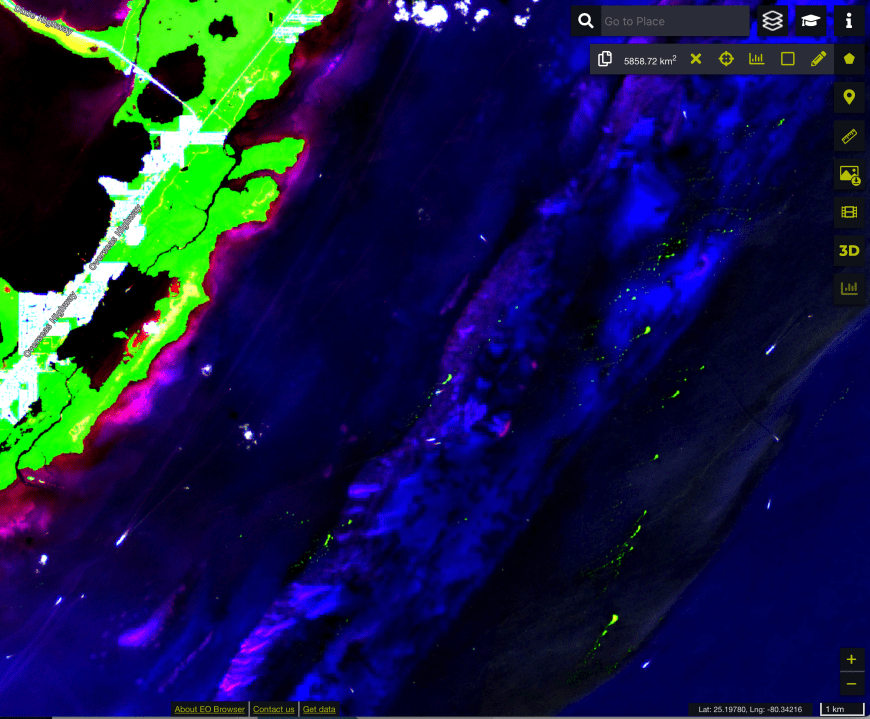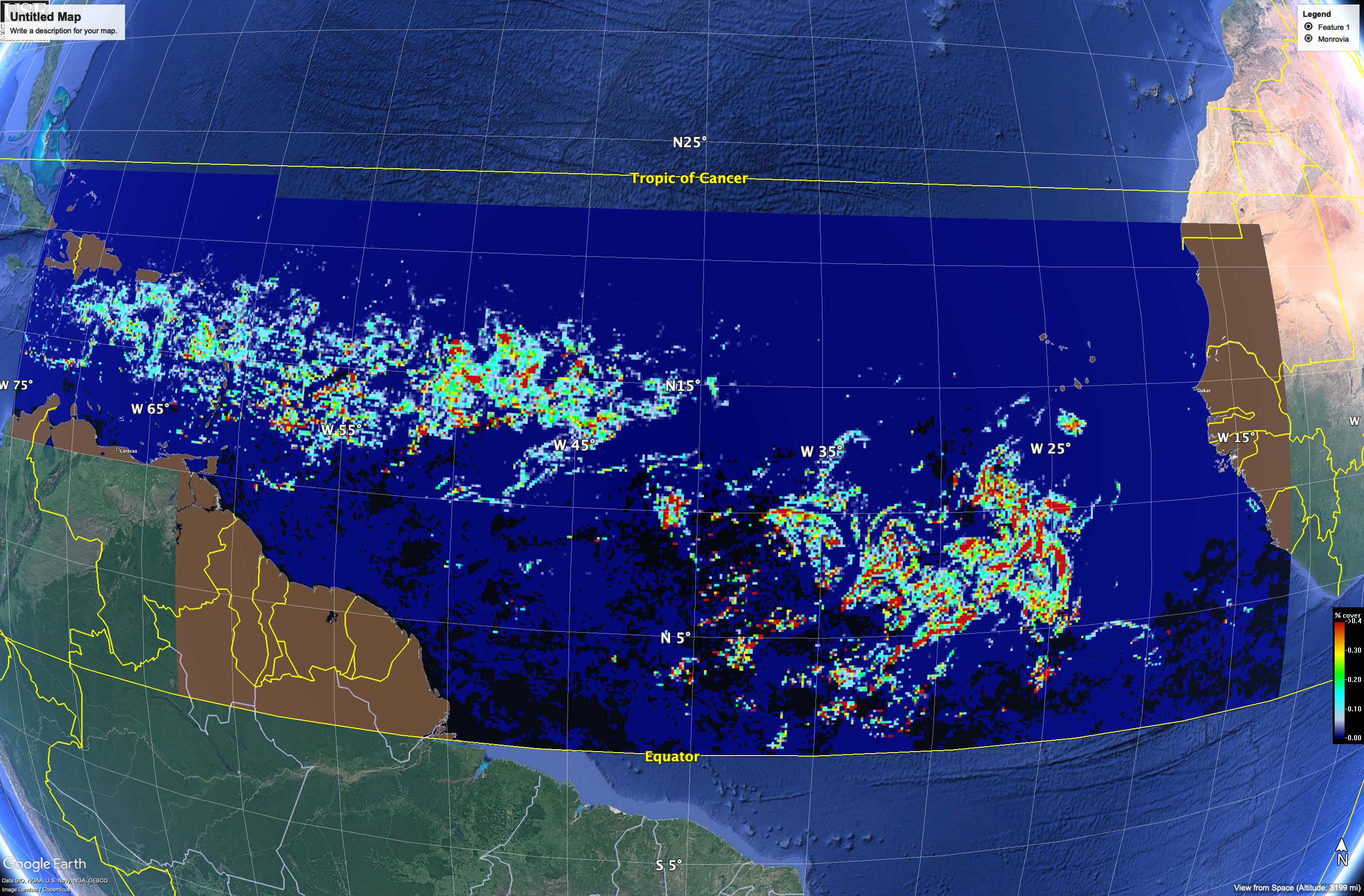Satellite images show 5,000-mile seaweed belt creeping closer to US
(NEXSTAR) – Over the next few months, a massive belt of seaweed is projected to make its way closer to Florida and the Caribbean, and pile up in mounds as it washes ashore. It’s not just an eyesore — the seaweed, called sargassum, smells terrible as it rots, and can cause breathing issues for some.
The Great Atlantic Sargassum Belt stretches from West Africa to the Gulf of Mexico. It’s not a new occurrence, but satellite images captured in February showed an earlier start than usual for such a large accumulation in the open ocean.
More images taken in March (below) show the bulk of the mass is still out in the Atlantic Ocean, but traces can be seen coming up into the Caribbean Sea and the Gulf of Mexico.
Some sargassum has already started washing up in Florida, the health department said, but the worst is unfortunately still to come. Scientists are closely monitoring satellite imagery to identify areas where beaching may occur.
It’s tricky to predict the exact timing of the seaweed’s movement, but the sargassum is expected to really start washing up in late spring and early summer, said Chuanmin Hu, who tracks the belt as a researcher at USF’s College of Marine Science.
Another satellite image zooms in on Key Largo, in the Florida Keys, which is one of the areas Hu predicts will be most impacted in the U.S. The green spots visible off the coast on the map are sargassum patches.

A satellite image from Mar 11, 2023 shows an area 5-10 miles east of Key Largo, Florida, with Sargassum mats appearing as “greenish balloons” off the coast. (Courtesy USF/NOAA)
When it does start to arrive en masse, the southeast coast of Florida (from Miami to Palm Beach) and the ocean side of the Florida Keys will start to see the seaweed pile up. Florida’s western side will be mostly spared, Hu said, but the area between Panama City and Mobile Bay could get some sargassum washing up later in spring.
Scientists estimate there’s more than 10 million metric tons of sargassum in the belt this year. Rick Lumpkin, director of the Physical Oceanography Division at NOAA, called it “one of the strongest years, but not the strongest” since scientists began closely observing the biomass via satellite imagery in 2011.
Sargassum — in normal quantities — actually contributes to a valuable ocean ecosystem. The problems start when the seaweed comes on land and starts to rot. As it decays, sargassum lets off hydrogen sulfide and smells like rotten eggs, explains the Florida Department of Health. It can irritate people’s eyes, nose and throat, and trigger breathing issues for people with asthma.
“Sargassum is also known to often contain heavy metals that can be toxic to humans and animals,” NOAA explains.
Brief exposure isn’t enough to make people sick, but prolonged exposure — especially for those with respiratory issues — can be dangerous, scientists say.
Hu said it could be an issue for hotel workers and others who may spend hours removing the decomposing sargassum from beaches.
Left to rot on the beach, sargassum can turn into a problem. It can harm coastal marine ecosystems and also supports the growth of fecal bacteria.
The Associated Press contributed to this report.
Copyright 2023 Nexstar Media Inc. All rights reserved. This material may not be published, broadcast, rewritten, or redistributed. Regular the hill posts









